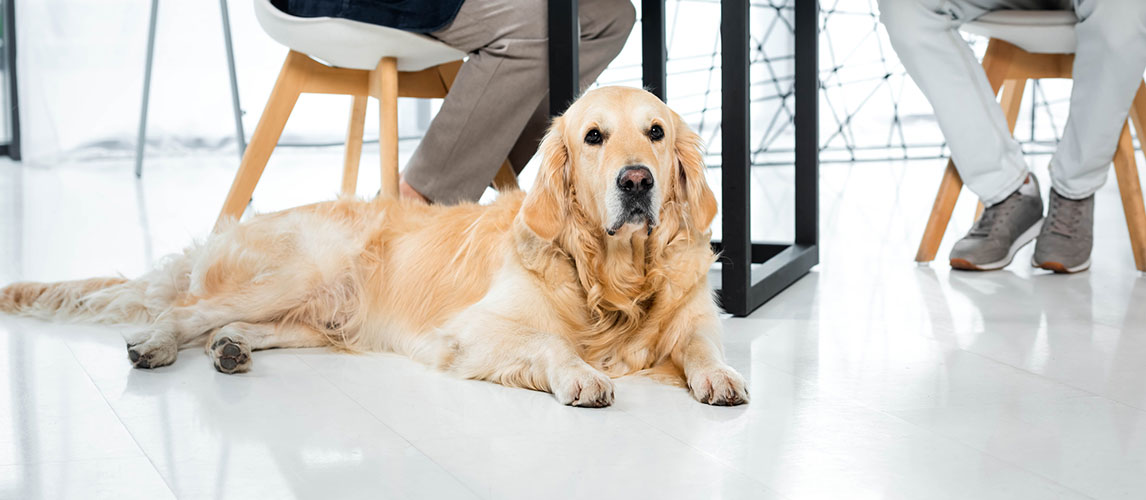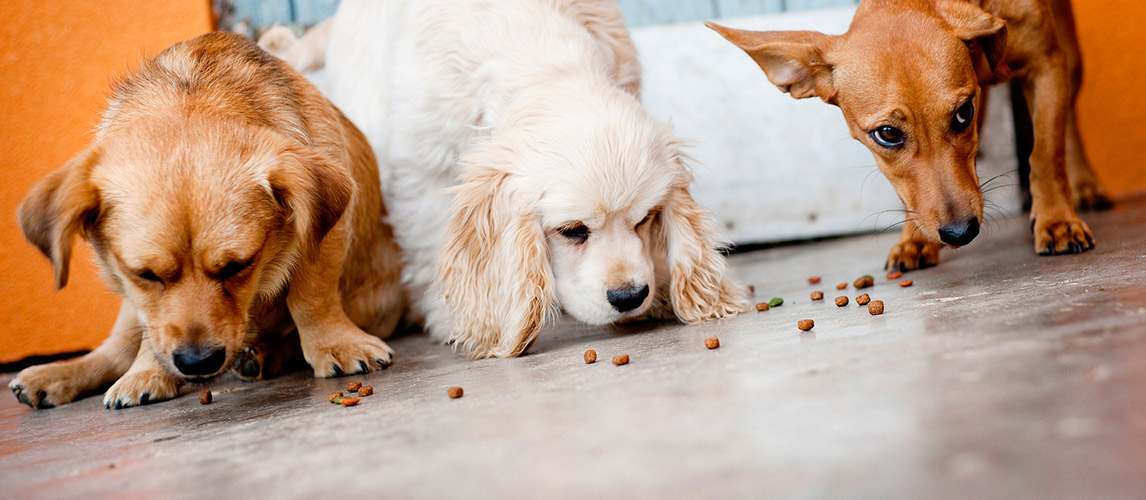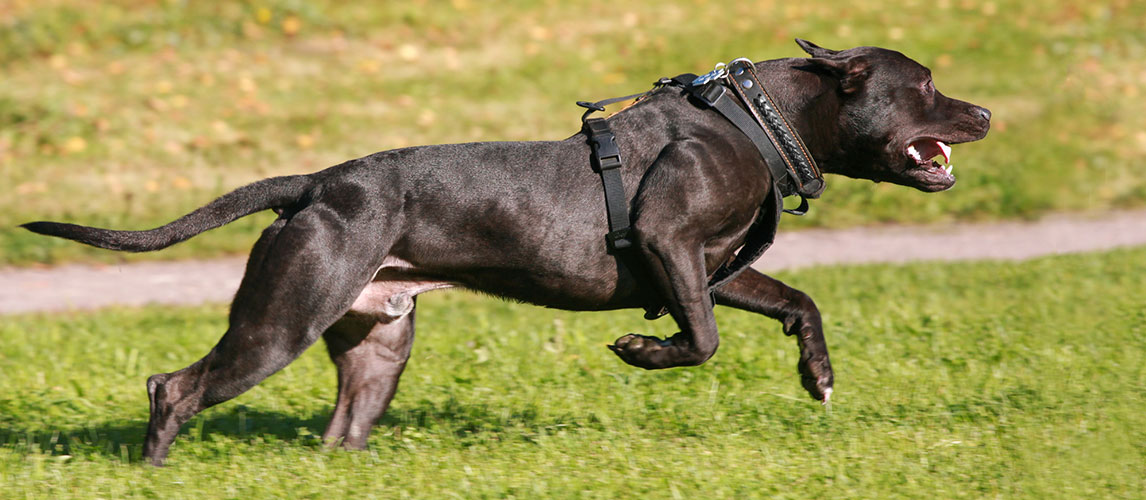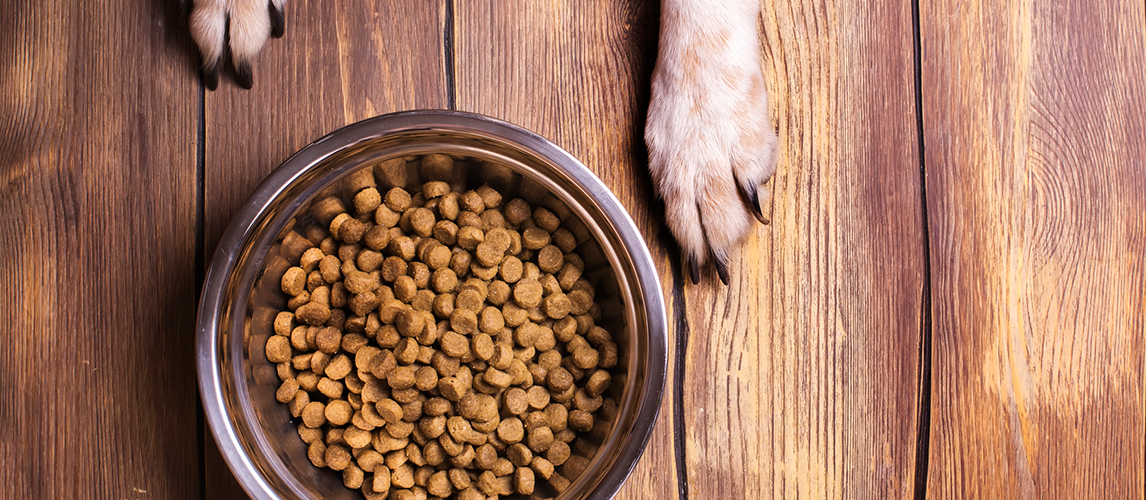You may not think that you will ever need to learn how to put weight on a dog. After all, it is true that pet obesity is a serious and all-too-common issue. However, dogs can also be underweight for a wide variety of reasons, and when it happens, you’ll be surprised just how difficult it can be to get them to eat more to become healthy. Some dogs are fussy, some dogs have naturally small appetites, and some dogs have biological or medical concerns that make it difficult for them to put on weight, even when they appear to be eating a lot.
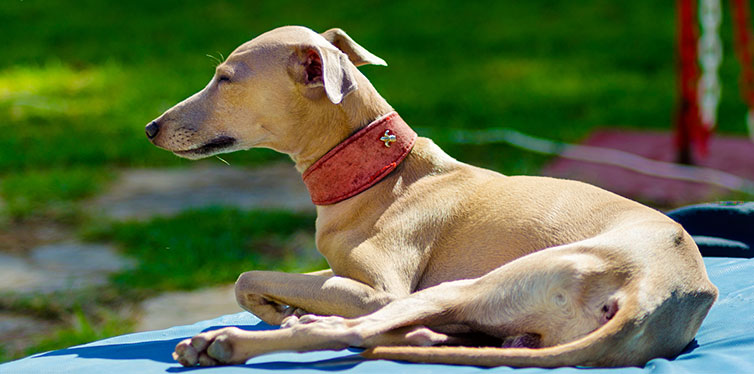
Underweight Dogs
If you want to know how to put weight on a dog safely, you must first make sure you understand why they are underweight. The cause of weight loss will determine the best way to treat it, and there are quite a few potential causes. You will need to go to a vet to fully understand why your dog is underweight. They will be able to rule out medical causes and give you the best and most appropriate advice for your situation. Common causes of weight loss in dogs include:
- Parasites
- Cancer
- Kidney Disease
- Heart Disease
- Dental Disease
- Recent dietary changes or unsuitable, poor quality dog food
- Stress or Anxiety
Depending on the illness, you may find that your dog naturally puts on weight once they are healthy again. However, you will also need to ensure they are eating a suitable, healthy, and balanced diet throughout their treatment. Similarly, a dog that is currently being offered an insufficient diet will need to have its needs carefully re-evaluated and a new feeding schedule created.
On the other hand, a dog that is underweight due to stress or anxiety will need changes to their environment, rather than their food. It is always possible that your underweight dog could benefit from both environmental and dietary changes, so the best thing to do is listen to your vet.
If you are struggling to put weight on your dog, check out our Dog Food for Picky Eaters article.
A Balanced Diet
The best way to put weight on a dog is to start by evaluating what you are feeding them, particularly if they have no other symptoms of illness. Is it a balanced diet that offers them all the nutrients they need? You may think you know what a balanced dog diet looks like, but you should check the ingredients and instructions of your dog food carefully.
It is not uncommon for pet parents to make mistakes when calculating calories or when switching food brands. Remember that a 1/2 cup of one dog food is not necessarily going to offer the same calorific content as a 1/2 cup of another. With this in mind, it is always helpful to go over some basic guidelines for creating a balanced diet for your dog.
- Water is essential for dogs and they must have access to fresh water at all times.
- Protein is the most important nutrient that they need. Proteins found in vegetables and cereals are not sufficient. They need animal protein, and it must be one of the first ingredients listed in any food you give to your dog. We’ve made a list of dog foods high in protein, so don’t forget to check it out.
- Fats can be great in moderation, particularly to help a dog gain weight, but remember that 1 oz of fat will have almost double the number of calories as 1oz of protein. Dogs will get sick if they are fed too much fat.
- Carbohydrates are essential as they provide fiber. This is present in most dog foods in the form of corn, rice, and wheat. They can be fattening, so some underweight dogs may benefit from additional carbohydrates in their food.
- Vitamins and Minerals. If you are worried about providing enough nutrients for your dog, you can provide them with vitamin and mineral supplements. However, you should consult with a vet to ensure you are not unbalancing their diet.
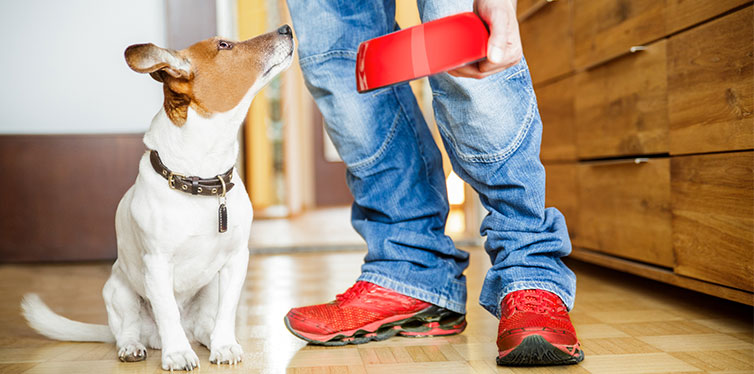
Adding Calories
Ensuring you are offering a balanced diet to your dog is always beneficial. It will help an underfed dog to eat better, and it will support the recovery of a dog that is suffering from an illness or disease. However, if your dog already has a balanced diet, and simply needs to put on weight, the answer is simple – they need more calories.
If you are wondering ‘what can I feed my dog to gain weight, there are two key options, and they can be quite easy to do, depending on your dog’s personality.
Give Them Another Meal Every Day
Sometimes the answer is as simple as offering them more food. As long as the food is already balanced, with plenty of protein, carbohydrates, minerals, and vitamins, then more of it will help your dog to put on weight – simple! So, if your dog already has breakfast and dinner, start adding lunch at midday.
An important issue to factor in if you do this method, however, is that your dog will also require more bathroom breaks. So, if you want to avoid an unpleasant surprise, make sure to also add another trip outside to your daily routine.
Offer Them Human Food
Many human foods are dangerous for dogs, so do not provide your dog with human food if you are at all unsure if it will be good for them. However, if you are certain, feeding your dog additional treats of human food, such as when you have your own dinner, will create a further opportunity for your dog to add a few calories to their day, and will help them to put on weight.
Making Food More Appetizing
Another reason that human food can help dogs put on weight is that it can encourage a fussy eater, or an anxious eater, to eat more often. For many dogs, stress or anxiety is the cause of their weight loss and the problem may be that they just won’t eat enough, no matter how much you offer them. For dogs like this, you need to work on making food appear more appetizing while tackling the underlying causes of stress.
The cause of stress could be environmental, psychological, or medical, so if you need to know how to put weight on a dog with a sensitive stomach or anxiety, here are some tips for making food more appetizing. However, make sure you also visit a vet to help diagnose the cause of the stress so that you can simultaneously work on eliminating it.
Try a New Brand of Food
Dogs do have preferences and tastes, so it is worth taking the time to try out a few different foods to see which one sparks the best response from your dog. You must make sure that every brand you try is high quality and balanced, and you must be careful to ensure you are providing your dog with the same amount of calories, as foods can vary in calories-per-ounce. To find some interesting food options for dogs with sensitive stomachs click here.
Heat up the Food
Dogs respond better to warm food as it better simulates what their ancestors would have eaten, and smells more appetizing. You must make sure this is warm, and not hot, food. Remember that you are, essentially, trying to mimic the body temperature of a wolf’s prey, rather than creating a meal that is scalding hot. Serving your dog hot food can damage their mouths. In order to avoid boiling or microwaving the nutrients out of a meal, the best way to heat up your dog’s food is to put it in a container that is safe for heating and add this container to boiling water.
Exercise
Exercise is also an important factor to consider when putting weight on a dog. It is a bad idea to reduce the amount of exercise they get, as exercise keeps your dog fit and healthy in other ways. It is also possible that your dog’s weight loss is related to muscle atrophy, possibly due to conditions such as arthritis or metabolic diseases. This would be diagnosed by a vet, who will advise you how best to treat the issue.
Helping a Starving Rescue Dog
It is possible that you are interested in dog weight loss because you have come across a badly emaciated dog that needs urgent care and attention. Obviously, you must take such a dog to the vet. However, it is also important that you know how to put weight on a malnourished dog, as it is different from other underweight dogs.
The most important thing is that you do not offer the dog a lot of food. If you give them too much food, too quickly, they can die from ‘refeeding syndrome’, when the body is suddenly shocked by too much phosphorus and potassium, leading to cardiac and respiratory shutdown. A vet will be able to advise you, but they are likely to advise feeding the dog very small amounts several times a day, rather than offering them 2 or 3 big meals, as you would most other dogs.
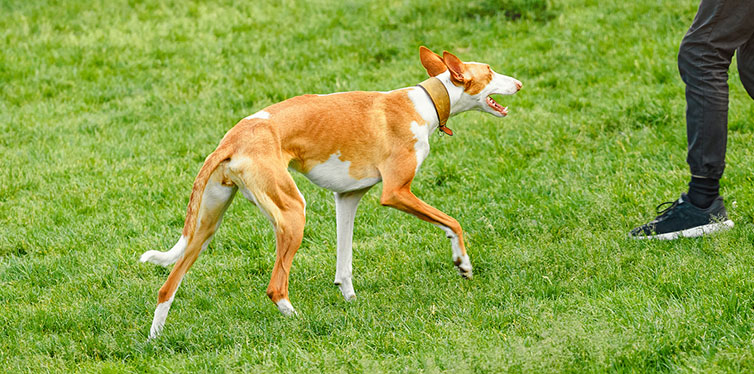
Visiting Your Vet
Last, of all, remember that different breeds of dogs often have different ideal body weights and shapes. A greyhound, for example, will always naturally look leaner than a Labrador Retriever. However, ultimately, the best thing you can do if you are worried about any pet’s weight is to take them to the vet. They will give you the best advice for your dog’s breed and health. When you visit the vet, it is a good idea to bring:
- A record of their weight loss if you have been weighing them regularly
- Packaging of any food and treats you give them, as well as how often you offer them this food
- A record of any potential additional symptoms
- A record of how much they are eating of the food you give them.
- A record of their activity and exercise routines.
Sources:
- Katherine Barrington, How Do I Help My Skinny Dog Gain Weight?, The Nest
- How to Help Your Dog Gain Weight, HowStuffWorks
- Paula Fitzsimmons, How to Help a Puppy Who Isn’t Gaining Weight, PetMD
Note: The advice provided in this post is intended for informational purposes and does not constitute medical advice regarding pets. For an accurate diagnosis of your pet's condition, please make an appointment with your vet.

